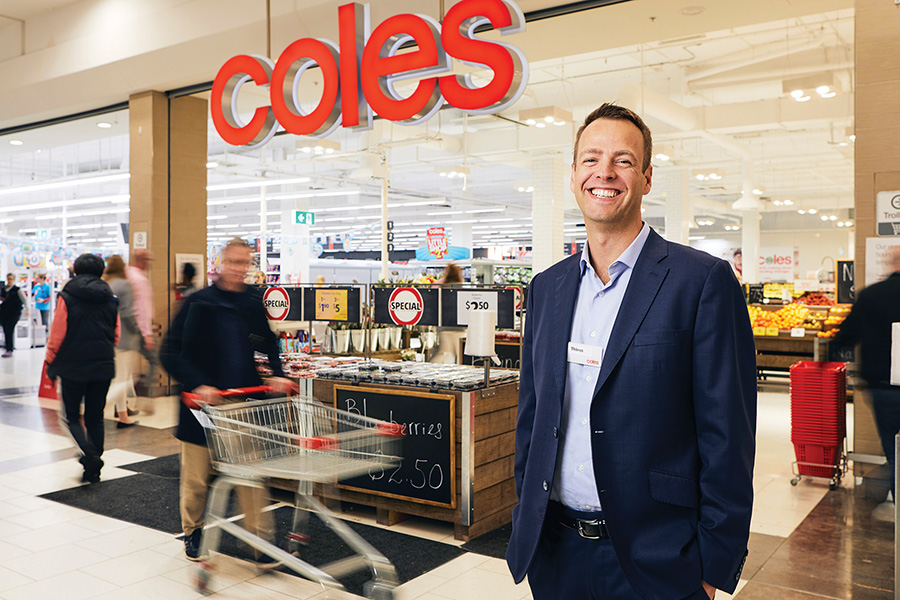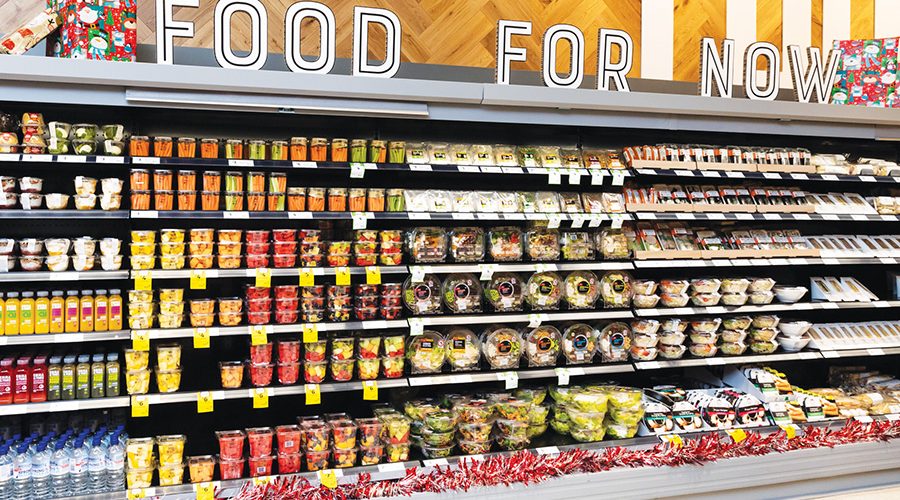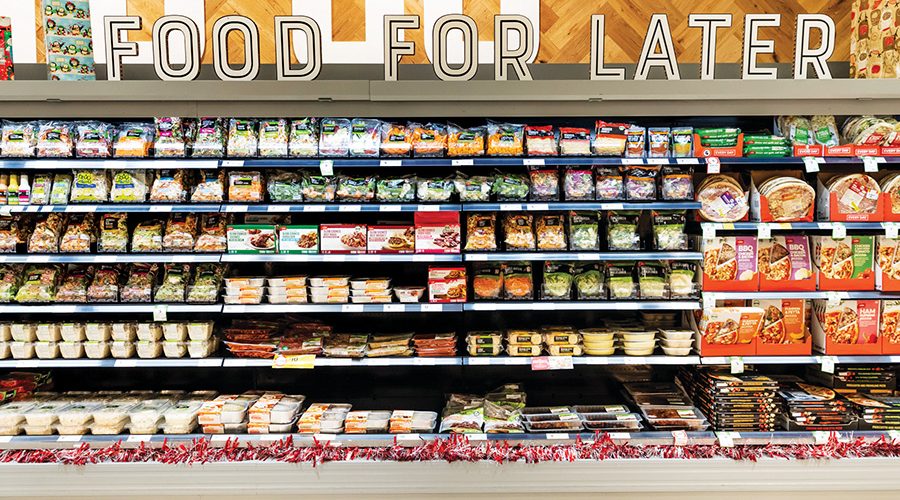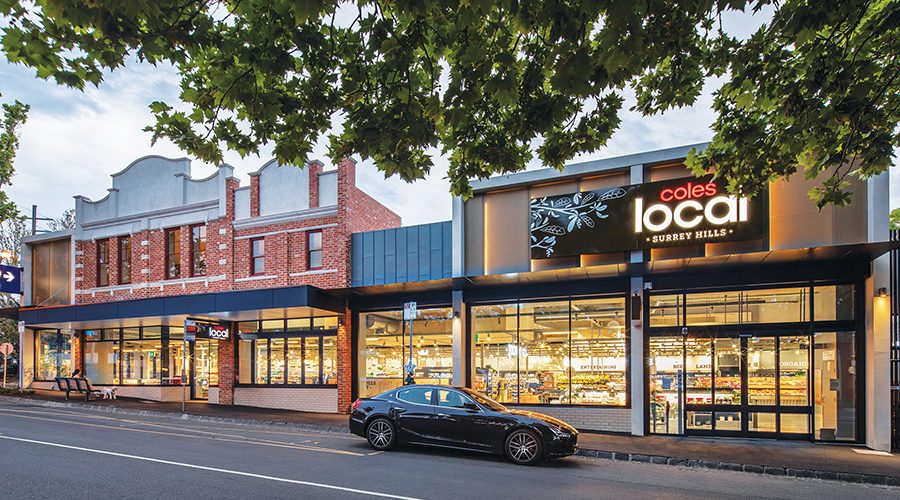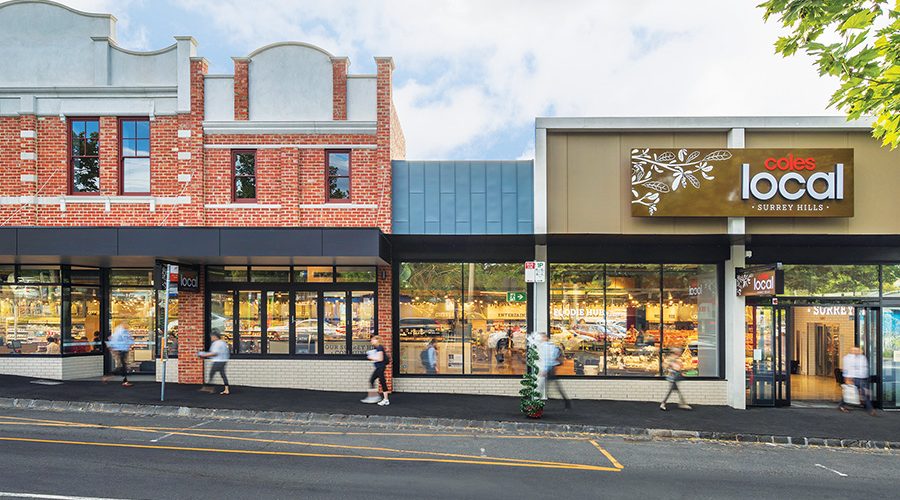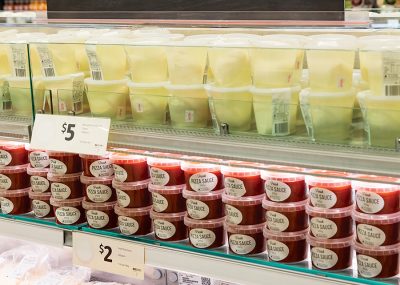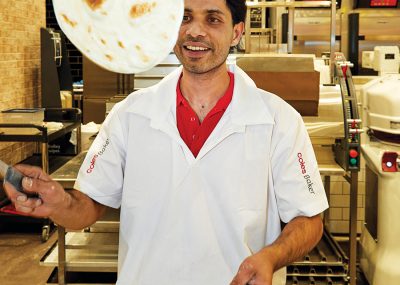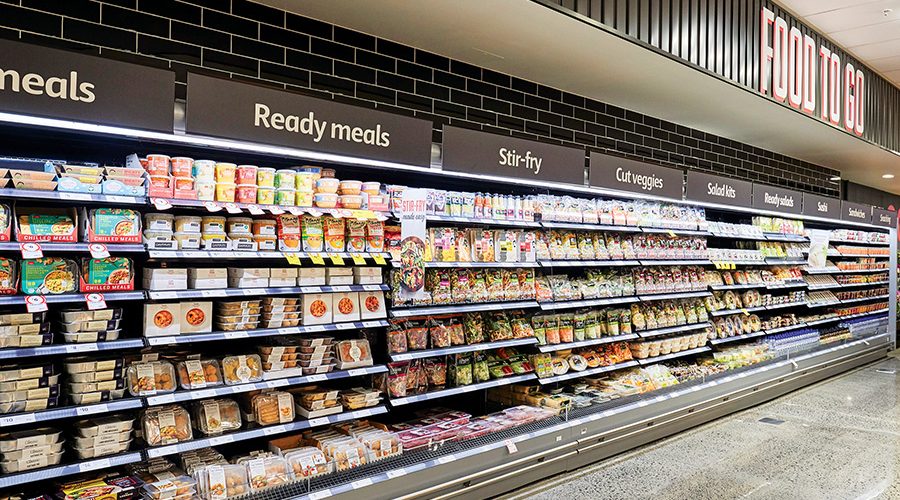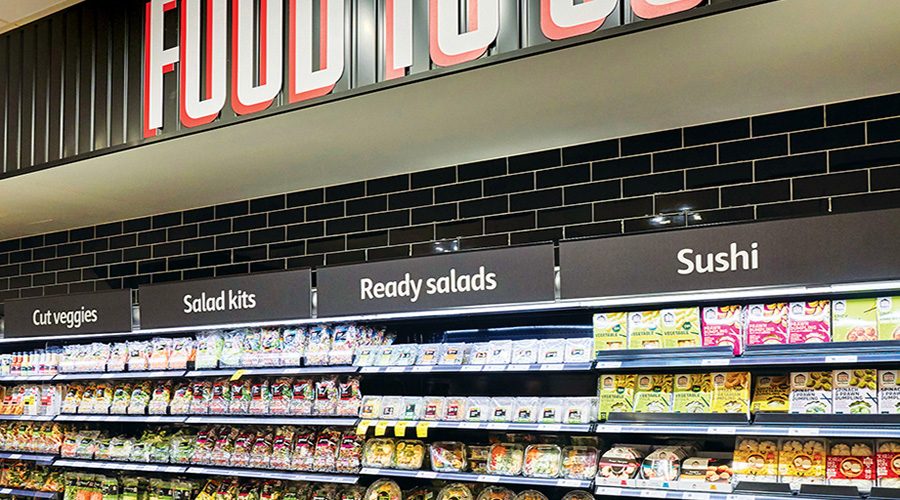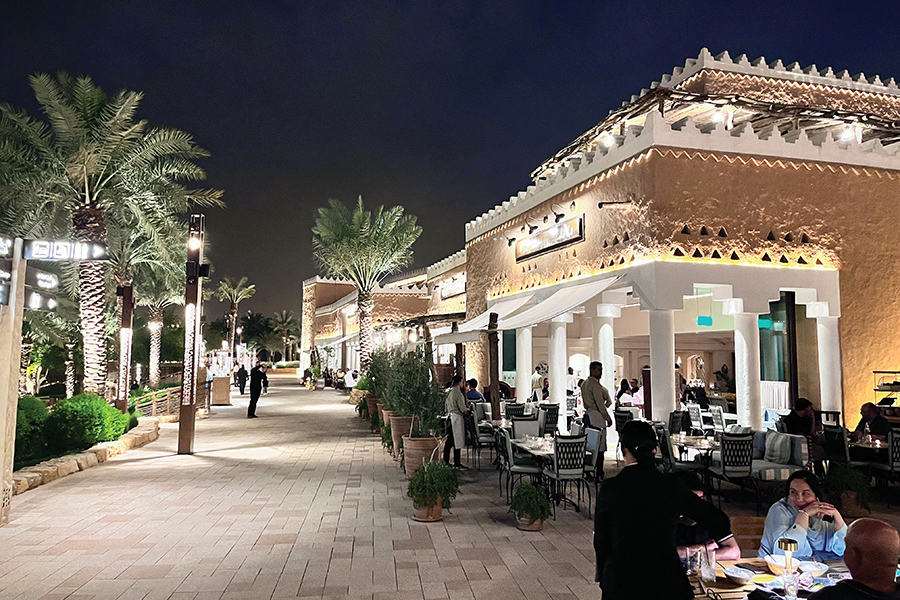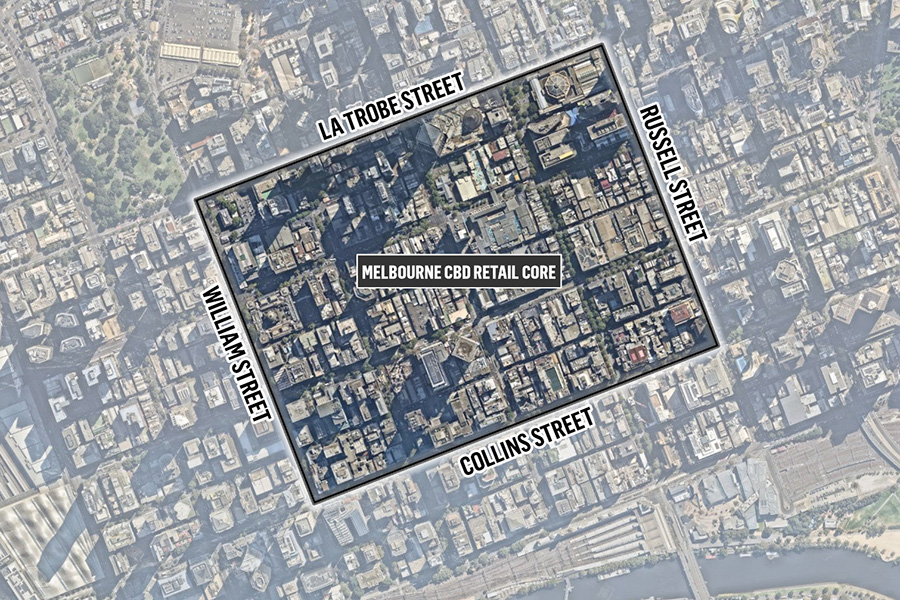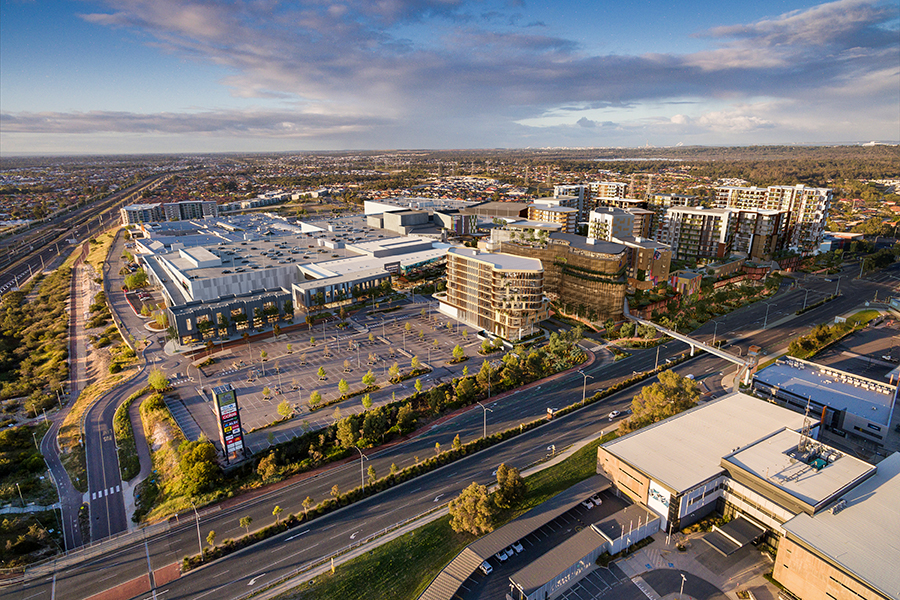Years ago, Coles was part of the massive Coles Myer Group, the largest retail conglomerate in Australia. It then became part of Wesfarmers, the largest conglomerate in Australia! In late 2018, Coles was demerged from Wesfarmers and began a new life as an independent retailer, in control of its own destiny. It’s a transition that has significant positive influence on the way the Coles Group can now conduct business with shopping centres. They’ve altered the relationship from ‘transactional’ to ‘partnership’.
This is a story about change; about dramatic change. This is no tinkering around the edges, no refining or slight alterations; instead it’s about a whole new presentation – a major structural change in the way a company conducts its business. In fact, it’s a whole new culture.
It’s a story about Coles. To understand the change, it’s necessary to go back to the beginning.
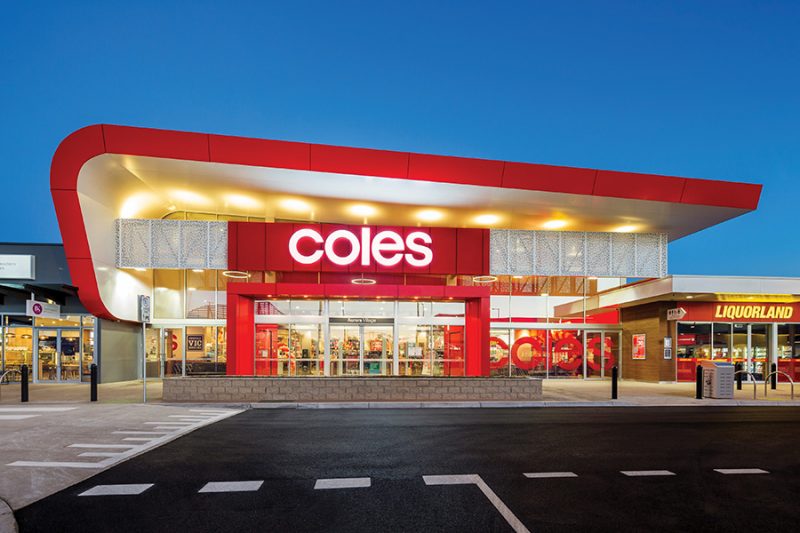
In 2007, Wesfarmers purchased the Coles Group (formerly Coles Myer) and renamed it after Myer was sold the previous year. Coles Group at that time comprised Coles Supermarket, Bi-Lo, Target, Kmart, Officeworks, Liquorland, Vintage Cellars and First Choice Liquor. While financial performance had been under a cloud for some time, the turnaround potential was clear and with a number of private equity teams joining the bidding, the hammer fell at about $20 billion – at that time the largest take-over bid in Australian corporate history.
Wesfarmers, a conglomerate with interests in mining, energy, chemicals and – through its successful Bunnings hardware division – retail, quickly got to work on renovations and restructuring parts of the Coles Group businesses, installing new senior management, and creating reporting hierarchies that went all the way up to the Wesfarmers board. At Coles, while the executive leaders had dominion over operational decisions and were held accountable for performance, many financial decisions required approval from the parent company.
Overwhelmingly, this was a positive relationship. Wesfarmers invested about $8 billion in the Coles businesses over 10 years, addressing years of under-investment in stores and uncompetitive pricing. Customers noticed – and rewarded Coles with comparable store sales growth every quarter, while earnings before interest and tax more than doubled in the space of seven years.
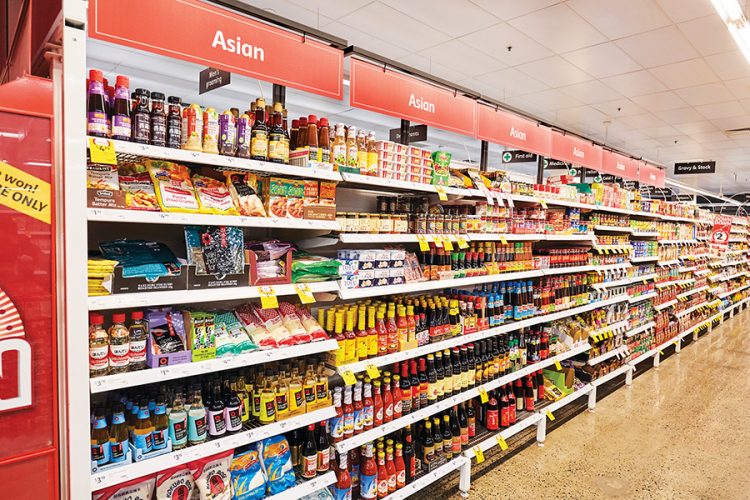
Then in November 2018, Coles demerged from Wesfarmers to rejoin the ASX as a listed company in its own right – this time made up of Coles Supermarkets, Coles Online, Liquorland, Vintage Cellars, First Choice Liquor and a 50% stake in loyalty program, flybuys. Wesfarmers retained a 15% holding of Coles Group and the other half of flybuys.
And so, after 10 years that saw Coles transformed, there is a new catalyst for change. Coles is reborn as an independent retailer, no longer part of a larger group juggling competing priorities, but master and controller of its own destiny!
For us in the shopping centre industry, our closest relationships with Coles are centred in its property division. Coles’ Chief Property and Export Officer is Thinus Keeve; SCN spent time with him and met several members of his team. It’s an impressive organisation, gearing itself to the future and the team is as one in its vision and ambition – to become the best, most sophisticated and efficient grocery business in Australia – which the company plans to achieve in the short term.
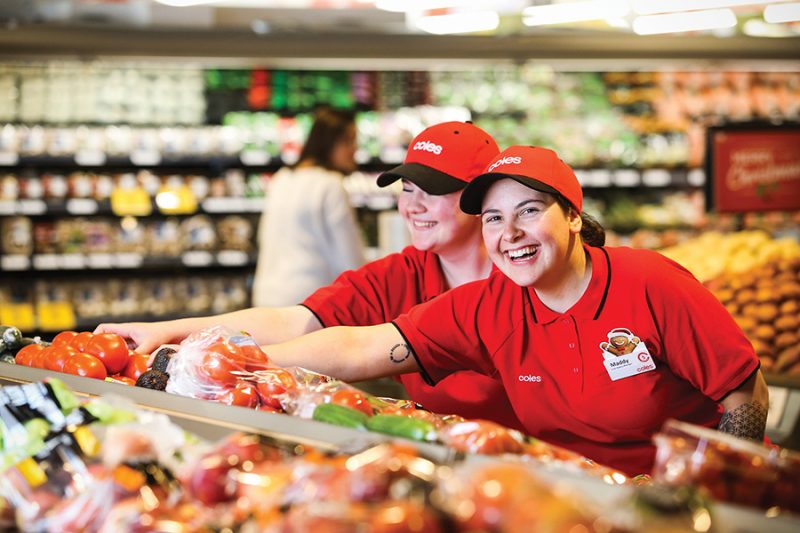
In the latest re-structuring of Coles, the Property Division has undergone serious and dramatic change. The appointment of Keeve, already a member of the executive leadership team, to the newly-inked role of Property Chief marks the first time property has been so visibly represented among the highest echelons of Coles’ management.
For the industry, it is an important reflection that the new Coles board and its leaders recognise that property is an integral part of retail.
Says Keeve: “In terms of property, Coles is open for business in a way the market hasn’t seen for a long time. We are changing the customer experience at Coles, and property, the way it’s presented, the design, the store layout, the décor, the relationship the store has to other retail in the centre – are all property issues – and they need to be at the forefront of our decision-making process.”
It’s easy to see how in the past, the Property division was somewhat constrained by being part of a large conglomerate. The acquisition of property or signing a 20-year lease commitment has significant influence on long-term commercial considerations. Property matters are not short-term profitability issues; they are complex and can have far-reaching implications. It is therefore fitting that some decisions require approval from the highest levels. As part of Wesfarmers, this meant some decisions could only be made by senior executives who had no real involvement in Coles’ day-to-day running. Alison Shillington, Head of Retail Property, gave the perfect example. “We could look at a property, decide it was for us and make a recommendation. The Board could give approval but we still couldn’t act because the Capital Expenditure meetings only took place every three months. Although we were 99% certain it would all go through, we still couldn’t finalise without approval and that time gap often prejudiced the deal!” Since the demerger, Alison told SCN that she’d had a four-store deal approved within 24 hours. “That’s not usual,” she said, “but it would have been impossible in the past.”
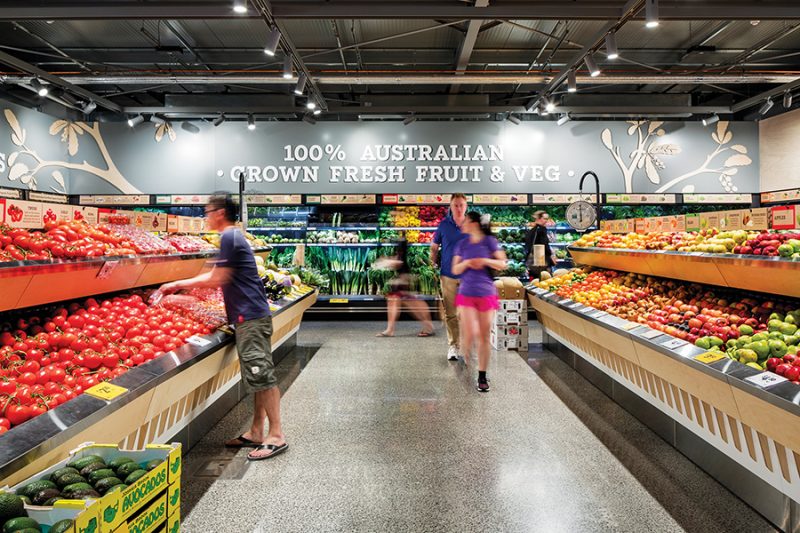
Coles Group Property Surrey Hills Project
For Coles, this is clearly a whole new ball game and the team is enthusiastic about the new advantages it will give them. They can act quickly and decisively; the decision-makers are now all under one roof, all in the same business and all part of the same team.
And there’s more: it’s not just the decision-making process that’s changed – the product itself (which in property terms means the store itself) is now more flexible. The key word is ‘innovation’.
“For 15 years,” says Keeve, “we’ve had one format; a supermarket at about 4,000m2. In the last year, we’ve launched another three, giving us greater flexibility; we can look at various options, we’re open to a wide range of proposals.”
Coles’ plan is to tailor up to 40% of selling space in all stores to the needs of the local catchment – that could mean anything from chilled Japanese soft drinks or Kosher roast chickens to an extended range of vegan ‘meat alternatives’. At a high level, the supermarket offering breaks down into three primary formats.
Format A is a ‘new look’ supermarket with a focus on fresh and convenience – which in Coles means ready-to-eat and ready-to-cook foods. These are high-volume stores appealing not just to the mid-high affluence family type shopping but also to ‘time-poor’ professionals, who want both breakfast and lunch on the go and a fresh and healthy dinner they can throw together before helping the kids with their homework. In one fridge is pre-made sandwiches, sushi in another and Bircher muesli pots and pre-cut fruit in the next.
Further down the aisle, another fridge replicates the ‘meal kit’ solutions seen on doorsteps across the inner suburbs – pre-cut strips of fresh chicken on one shelf, pre-cut veggies on the next, and at the top are fresh noodles and a range of sauces. In 15 seconds, you’ve got everything you need for tonight’s dinner.
These stores also have an extended range including premium, ‘foodie’ offerings, catering to a mid-high affluence market.
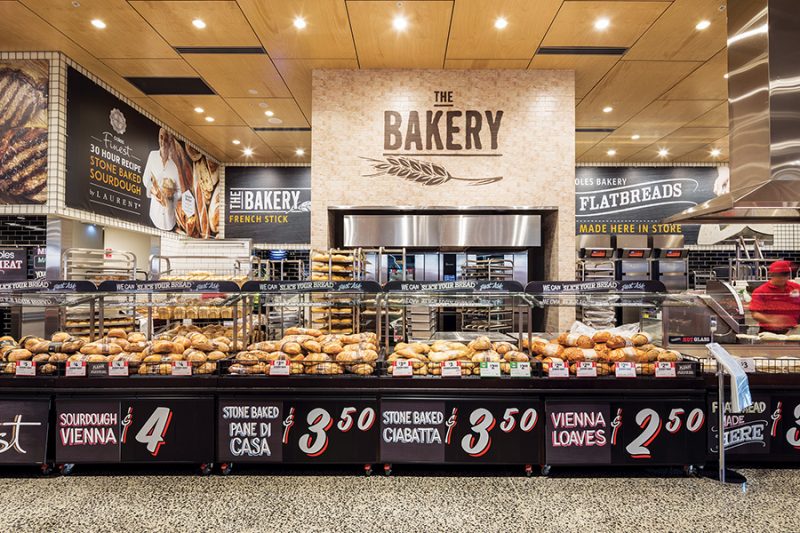
Format B is the standard or traditional Coles. It’s a full-line supermarket with Deli and Bakery, positioned at medium affluence and medium volume but without the premium ‘foodie’ range or extended convenience factor of Format A.
Format C offers a lower cost outlet focused on self-service with no delicatessen or in-store bakery production (fresh loaves are brought in daily from a nearby Format A or B store) and a range that focuses on the needs of mid-low affluence customers.
Then there’s Coles Local, a significantly smaller store of anywhere around 1,000m2. But the area is highly flexible; if the location was right, it could get to as small as 800m2 and as large as 2,000m2. Even more than the supermarkets, the range in Coles Local is built entirely around local demand.
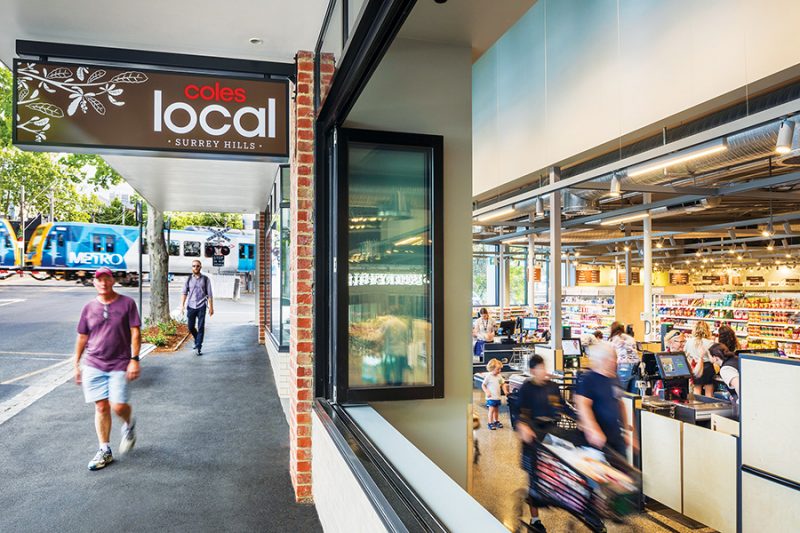
Coles Group Property Surrey Hills Project
The Coles Local in Melbourne’s Surrey Hills has become a favourite of the region. It’s a fairly affluent trade area containing a high percentage of professionals and managers; quality produce, organic, vegan and premium food and drinks are in high demand.
Like many inner suburbs, there’s also a demand for speed and efficiency from customers fitting the shopping in between the school run and dinner. It’s also an educated demographic with strong views on the environment.
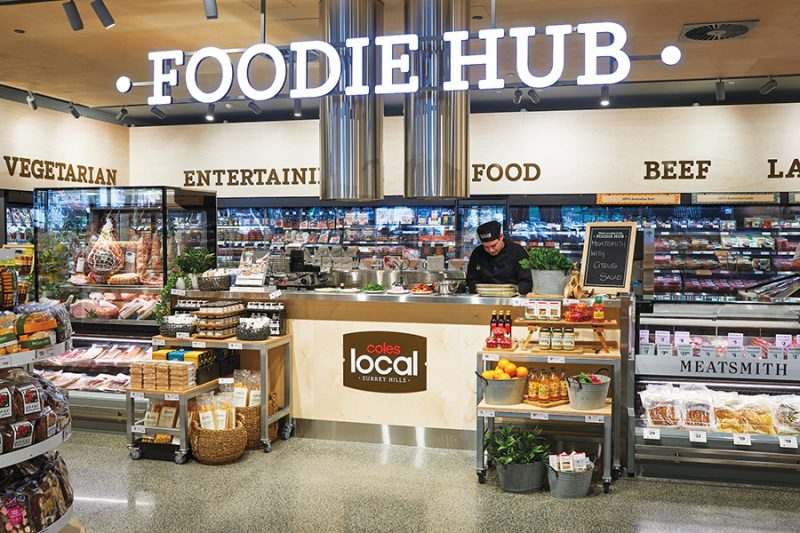
A major section of organic food is available, as well as dedicated vegetarian and vegan sections. A partnership with a local, iconic quality butcher, Meatsmith, has been formed and the brand is featured in the store. The fish section stocks only 100% Australian produce and all eggs are free range. Brunetti’s, another iconic Melbourne café and bakery supplies pastries and, again, its brand name is featured. Honey biodynamically farmed in local backyards – remember, we’re in the middle of suburbia here – is on the shelf next to the Vegemite.
Surrey Hills Coles Local is 1,280m2. What’s surprising is that it still carries the full range of products found in the larger stores; the difference is simply less variety in different brands of the same item. And, of course, there’s an accent on different items. At Surrey Hills, positioned near the checkouts are the instant meals, the delicatessen and meat section, bread and pastries and so on; all geared towards a professional, looking for quality product, speed and convenience. The floor staff are drawn from the local area; unlike in the larger supermarkets, they cover the whole floor and know the entire layout as distinct from being ‘sectionalised’.
Any ‘left over’ or unsold food goes straight to SecondBite, an organisation that distributes food to people in need. In its first year, the Surrey Hills Coles Local gave 40,000 meals to SecondBite. With a ‘zero food waste to landfill’ policy, any food that can’t be donated is handled by an Orca machine out the back, a ‘mechanical stomach’ that digests food waste, reducing it to a liquid that can be safely disposed of in the sewer after any oils are captured in a grease trap.
It’s reflective of the new culture that we’re getting all this information from the ‘property team’ of Coles; they’re much closer to the ‘retail’ team than in the past. They are also closer to other parts of the operation and get involved in areas a traditional property arm wouldn’t touch. They talk about the online business and the new methods of supplying the stores.
“We’ve entered into a partnership with Ocado,” says Keeve, “the largest online grocery retailer in the world – and the most efficient. We’re developing Customer Fulfilment Centres (CFCs) to process online orders. The technology is amazing.”
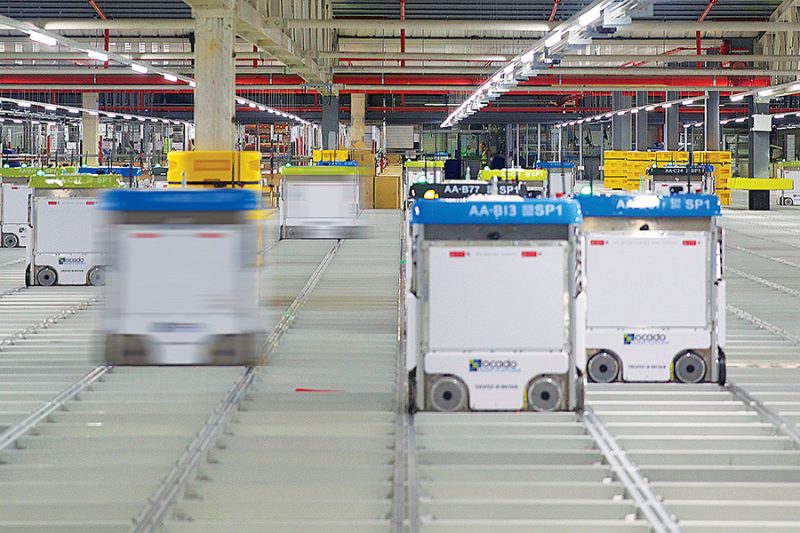
Ocado Warehouse
These centres are massive, comprising a ‘hive like’ layout of literally thousands of open containers each filled with a single SKU (stock-keeping unit). Across the top of these containers move hundreds of robots that collect individual items, picking a customer order of 50 items within three minutes. Their movements are so finely coordinated – the technology is similar to that used in air-traffic control and each robot works using about 1 gigabyte of data per day – that the robots can pass each other at almost 30km/h with a clearance of just 5mm. Coles is confident that the CFCs (of which one each is currently planned to be built in Melbourne and Sydney by 2023) will double Coles’ home-delivery capacity while lowering ‘cost to serve’ – building a business that is not just bigger but also more profitable and effectively addresses the dilutive earnings impact that customer migration to online sales has had throughout the retail grocery sector.
And the adoption of transformative technology extends to other parts of the business – beyond the ‘online’ shopping.
Coles has selected the German automation technology giant Witron to deliver two new ambient distribution centres as part of a supply chain modernisation program that will improve availability for customers as well as reducing costs. Witron has delivered 54 similar projects across Europe and North America, with global retailers including E. Leclerc, Kroger, Target (US) and Coop Norway. Witron has already registered an Australian subsidiary company based in Sydney to manage the project. According to Witron, when the distribution centres, each some 70,000m2, are delivered in Queensland and NSW in 2023, they will be the most modern logistics infrastructure assets in Australia. Each store’s stock requirements are assembled at the centre, packed on pallets in a manner that conforms to the store layout. This means that they are unpacked ‘in-order’; as one item is placed on the shelves, the next item sits next to the one previously placed, and just before the following one, and so on and so on.
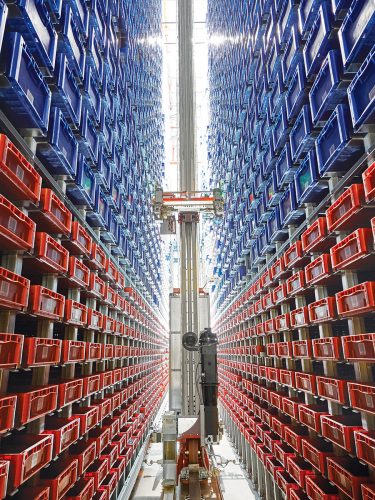
This moves away from the unsophisticated system of manual replenishments. It’s more efficient, which, according to Keeve, is one of the keys to profitable supermarket trading. It also improves ‘availability’ of the item, a key factor in customer satisfaction, and reduces the time that roll-cages full of stock are cluttering the aisles and getting in the way of shoppers.
As Coles now sits on its own, unburdened by the complexity of being part of a large conglomerate, its new-found independence opens up further opportunities. Tony Bullock, General Manager of Finance for Property, told SCN: “Previously, any large property activity went to the Wesfarmers Board. Access to the Board is now direct and at a level of detail that we didn’t see before. We can move more quickly and in different ways.” The different ways are interesting.
According to Bullock, the focus is now on building a network to relate to customers.
“Through the demerger, Wesfarmers ensured Coles was financially secure with a strong balance sheet. That means if the right retail opportunity comes along, we are well-placed to secure it. We’re open to deals that would have been impossible before; if we need to share the risk with the developer in some way, if we need to help with resources, or it could be some form of joint venture or vendor financing – whatever – if it’s the right opportunity, we’ll look at all options to secure it.”
Bullock added that ‘a creative approach’ to acquiring or leasing property was now the rule and it gave Coles new ways to unlock difficult opportunities.
What is highly noticeable when you talk to the Coles Property team is the level of integration they now have with the retail and operational side of the business. Of course, they were always an integral part of it before, but the relationship was somewhat at ‘arm’s-length’; the ‘retailers’ ran the business – the purchasing, the merchandising, the logistics, the margins, the offer, the marketing – all the ‘retail’ elements, while ‘property’ was something of a ‘service’ provided by the property team who would more likely be defined as ‘property people’ rather than ‘retailers’. Previously, the ‘property’ was static, a piece of infrastructure if you like, in which, the ‘retail’ took place.

Today, the attitude is very different. The property isn’t static; it’s flexible and it’s a very definite part of the retail offer. Today at Coles, it’s not about just selling supermarket stuff, it’s about customer experience, lifestyle, convenience, efficiency, even fashion! Keeve is expansive on the issue. “We’re constantly trialling. We’ve become agile; we realise we can’t procrastinate any more so the very culture is changing from one of being conservative, difficult, complex, hierarchical, risk averse, to one of being willing to learn, fail quick and remedy, and be open for innovation.” He gives an example:
“We came up with an idea for a DIY Pizza, a section where you picked up the base and then collected all the items for the topping – all the ingredients to make it. We just trialled it in Eastgardens and it was a great success so we’ll roll it out in other stores very soon.” In the ‘old world’ he says, that initiative would have been debated for a long time and various submissions made. Now they just did it; it works so they’ll roll it out.
It’s indicative that the example – a retail innovation – is given by the Chief Property Officer…
But for us in the shopping centre industry, the new culture has real significance in Coles’ present approach to landlords, centre management and developers. Keeve says that in the past, the relationship was ‘transactional’; now it’s one of ‘partnership’. And that partnership philosophy is echoed throughout the team. SCN visited Coles at The Glen shopping centre in Melbourne’s east suburban Glen Waverley just before the opening of the latest extension / refurbishment – the first Format A store in Victoria. Jimmy Latinopoulos, Head of Formats – Store Development, told us they’d worked well with Vicinity on the recent development. Just outside the Coles store there was formerly a massive trolley bay that was visually and aesthetically detrimental to the newly completed court leading into a fashion run. Coles relocated the trolley bay to inside the supermarket; in return, Vicinity Centres gave them use of the area for retail – promotions, activities or temporary retail. This activated the space, gave the court an attractive adjacency; a win-win situation between a landlord and tenant. He gives other examples: scheduling the opening of stores in newly-developed centres to maximise foot traffic for all tenants from day one; as well as allowing unused space to be leased to new tenants in return for improved access arrangements. The key is mutual benefit.
Jon Haggett, GM Store Development, told SCN that a whole new strategy of working closely with developers had been adopted; a closer relationship was being formed and Coles was trying to build developer requirements into its plans, especially when it came to centre refurbishments and redevelopments.
“Last year, we completed work on 45–50 stores; this year we’ll do 77 and next year our target is around the 80-mark.
Next year, our focus will be on the Format A stores – that’s bringing the old traditional supermarkets into the future – the fresh and convenient as well as the ‘foodie element’; these Format A stores are real winners and when a developer is refurbishing or extending a centre, it’s the perfect time for us to convert. We’re keen to work with the developers and the win-win situations are there for the taking.”
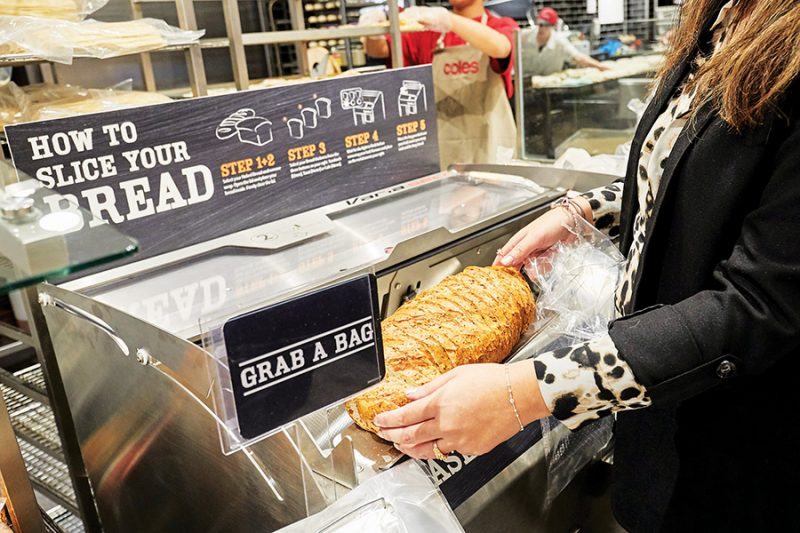
Coles The Glen
It’s quite obvious when you talk to Coles that the focus on the relationship with landlords, developers and Centre Managers is far more than some ‘feel good’ or ‘lip service’ strategy. They talk about issues beyond those of property, store development and presentation. The phrase that keeps coming up is that the relationship “should switch from transactional to partnership”, and this has some interesting connotations for the future. We all know that our business faces immense challenges from several forces and that we need as much detail, as much data and as much information on our trade area market as we can get. Coles has got a lot of information; a lot of data.
Rich Lyness, Head of Network Planning has been with Coles for more than seven years. “We look at locations and analyse them. We complete in-depth investigation of the market; we analyse the data, forecast the turnover of the supermarket – where? When? We’re a data and information supplier to the retailer. We have a new sales forecasting model; it’s a new approach, new computer models and we’re trying out new technology.” Lyness told SCN that they’d teamed up with ESRI (Environmental Systems Research Institute), it’s an international supplier of Geographic Information System (GIS) with more than 43% of the software market worldwide. “We supply them with the data and they map it,” said Lyness. “It’s also data from flybuys – we know where the customers are coming from, what they buy, how much they spend.”
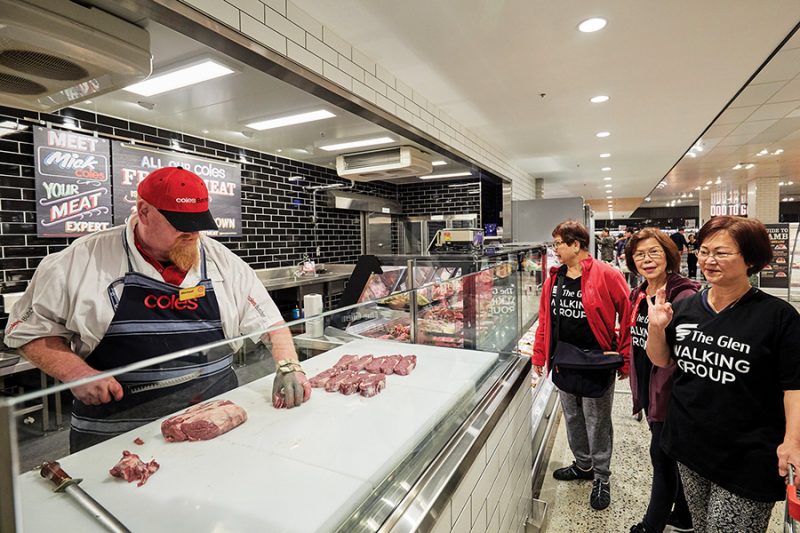
Coles The Glen
In the past, according to Lyness, the company was guarded about data but now it is open to sharing the insights the company gains with developers and Centre Management. Lyness told SCN that Coles gets about 50,000 responses a week from its customers in reply to queries about the Coles operation, including those on store presentation, access, parking and other ‘property related’ issues. “We can share much of that information with the centres and undoubtedly there will be areas of interest to them.”
‘Transactional to Partnership’. It’s a fitting description for a new attitude at Coles. The demerger from Wesfarmers and the emergence of an independent, self-determining and financially strong organisation has produced a team that’s keen, profit orientated, customer focused and eager to explore external strategic alliances – partnerships.
And for the first time in a long time, that includes property. They make no bones about it at all; Landlords, Developers and Centre Managers are those they’re courting.
And they’ve got a lot to offer.



